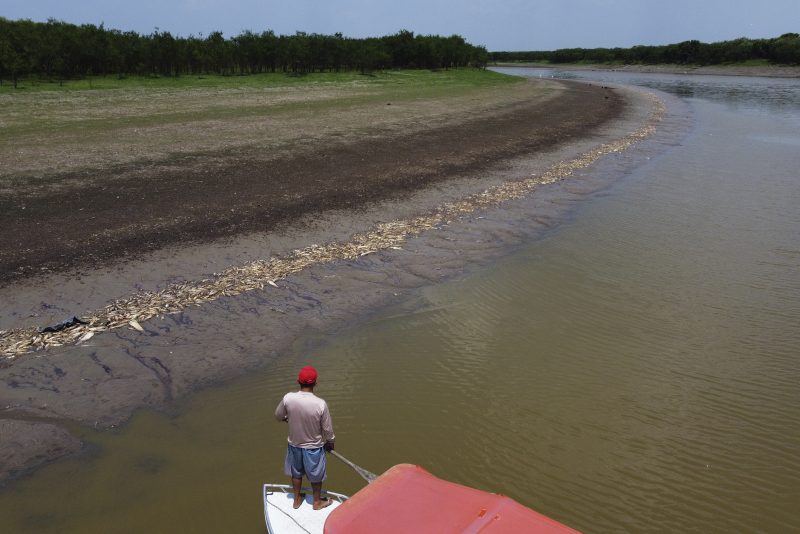
OAN’s Elizabeth Volberding
1:50 PM – Tuesday, October 3, 2023
According to reports, thousands of fish and over 100 dolphins have been found dead in the Brazilian Amazon rainforest due to a “severe drought and extreme temperatures.”
A local governor declared a state of emergency as experts say more deaths could be expected.
The Brazilian Amazon has been dealing with a severe drought, and throughout the past seven days, more than 100 dolphins and thousands of fish have been found dead.
Experts announced that the most likely cause of death were high water temperatures, which have exceeded 102 degrees Fahrenheit. Additionally, many more could die soon if water temperatures continue to rise.
As a result of the drastic environmental issue, Amazonas Governor Wilson Lima declared a state of emergency on Friday, September 29th, in response to the historic drought and began a response plan valued at $20 million.
According to the Mamirauá Institute, a research group of Brazil’s Ministry of Science, Technology and Innovation, two more deceased dolphins were discovered on Monday in the region near Tefé Lake, which is a prominent location for mammals and fish in the area.
The local Brazilian media has also stated that thousands of fish have died in the area.
The Amazon River is known as the world’s largest waterway and its basin is attached to the Amazon Rainforest, known for its biodiversity where millions of species reside. However, human activity and severe weather conditions in the region have brought about many environmental concerns.
“The past month in Tefé has seemed like a science-fiction climate-change scenario,” Daniel Tregidgo, a British researcher living in the area, told The Guardian. “Regular sightings of pink river dolphins are one of the great privileges of living in the heart of the Amazon. To know that one has died is sad, but to see piles of carcasses, knowing that this drought has killed over 100, is a tragedy.”
The mayor of Tefé, Nicson Marreira, announced that his government was affected due to the dry rivers. He also mentioned that the government has been unable to deliver food directly to some isolated communities. Additionally, Ayan Fleischmann, the geospatial coordinator at the Mamirauá Institute, proclaimed that the drought has caused a significant impact on the riverside communities in the Amazon region.
“Many communities are becoming isolated, without access to good quality water, without access to the river, which is their main means of transportation,” said Fleischmann.
Videos shared by the Mamirauá Institute portrayed vultures picking at the dolphin carcasses beached on the lakeside.
“It’s still early to determine the cause of this extreme event but according to our experts, it is certainly connected to the drought period and high temperatures in Lake Tefé, in which some points are exceeding 39 degrees Celsius (102 degrees Fahrenheit),” the Mamirauá Institute announced.
According to the Brazilian government’s Chico Mendes Institute for Biodiversity Conservation, which operates conservation areas, it had sent teams of veterinarians and aquatic mammal experts to examine the deaths.
As a result of the investigation, there had been some 1,400 river dolphins in Tefé Lake, said Miriam Marmontel, a researcher from the Mamirauá Institute.
“In one week we have already lost around 120 animals between the two of them, which could represent 5% to 10% of the population,” Marmontel said.
Water temperatures have increased from 89 degrees Fahrenheit on Friday to over 102 degrees Fahrenheit on Sunday.
According to the geospatial coordinator at the Mamirauá Institute, investigators are still determining the cause of the deaths, however, the high temperatures remain as the most likely cause.
Stay informed! Receive breaking news blasts directly to your inbox for free. Subscribe here. https://www.oann.com/alerts

